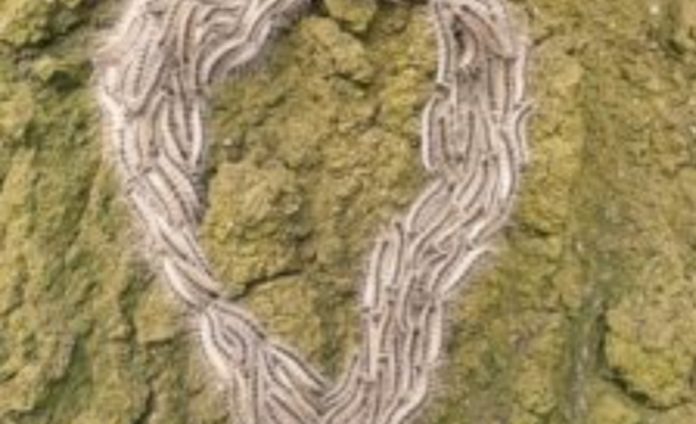The oak processionary caterpillar is a caterpillar that lives in some oak trees during spring and summer, usually in May, June and July, but due to the colder spring weather in 2021, most nuisance this year will occur in July and August.
Oak trees that house the oak processionary can be identified by a dense spindle around the branches and trunk of the tree. The caterpillars have stinging hairs that are invisible to the naked eye. Contact with the stinging hairs can cause complaints such as itching, bumps on the skin or cold-like symptoms
Try to avoid contact with the caterpillar. Make sure your neck, arms and legs are covered, do not touch the caterpillars and do not sit on the floor. Children should also be instructed to avoid contact with the caterpillar. In the event of contact, thoroughly wash or rinse the skin with lukewarm water. Alternatively, strip the skin with adhesive tape. Avoid rubbing or scratching.
Complaints caused by the oak processionary caterpillar
If the caterpillar’s hairs come into contact with the skin, eyes or lungs, they can penetrate the surface, resulting in complaints such as:
- (severe) itching, bumps, blisters, redness of the skin
- redness and swelling of the eyes.
Sometimes the symptoms can resemble a cold:
- runny nose
- itchy throat
- cough
- difficulty swallowing
- shortness of breath
Other complaints may include:
- vomiting
- dizziness
- fever
- a general feeling of disease
Symptoms vary per person. Regular contact with stinging hairs can increase the severity of the symptoms. Animals, particularly dogs and horses, can also be affected.
How to prevent complaints
Are you planning to visit a (nature) area where there are oak processionary caterpillars? The following advice helps to prevent complaints:
- Ensure your neck, arms and legs are covered.
- Avoid direct contact with caterpillars, (old) stinging hairs, silk nests and skins.
- Instruct children to avoid contact with the caterpillar.
- Avoid roads with oak trees that house processionary caterpillars. Trees with old nests can also be dangerous, as the remaining stinging hairs can still blow away.
- You can remove stinging hairs from clothing by washing them thoroughly, preferably at 60ºC.
- If there are oak trees in your garden with oak processionary caterpillars, do not deal with the caterpillars yourself. Hire a professional company or ask your municipality for advice.
This news item is a translation by http://www.h4i.nl of a post by Thuisarts.nl. The information is not intended to replace a consultation with a GP. For personal advice, please contact your GP.











